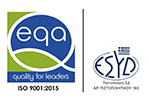Attractions of Heraklion
LOCATION
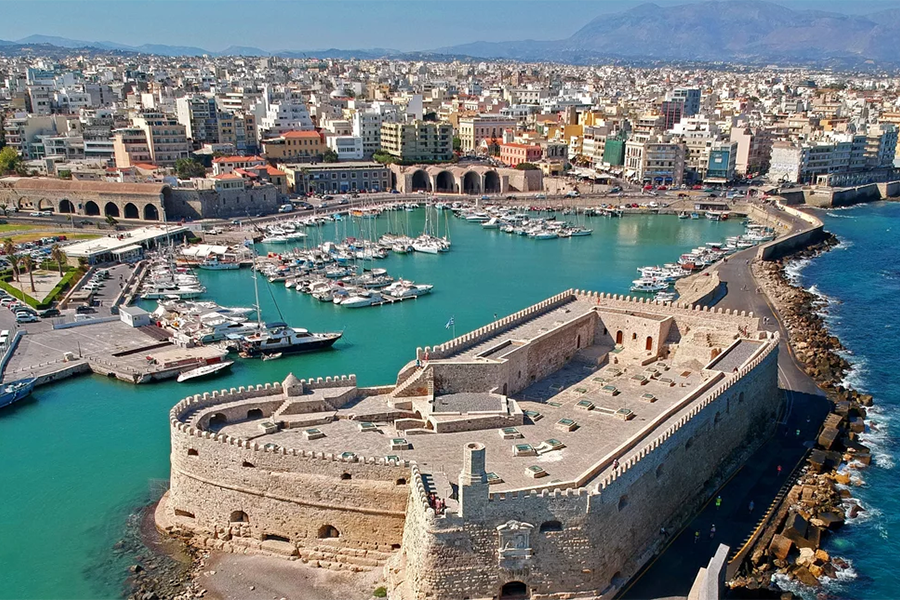
Crete is famous for its ancient culture and its unique natural beauties. It receives over two million visitors a year and is undoubtedly a four-season destination. Heraklion is a city with rich history, which was the metropolis of Crete for centuries. This has resulted in the city center containing some of the most enviable monuments and attractions, which now blend harmoniously with the modern lifestyle of the residents of Heraklion.
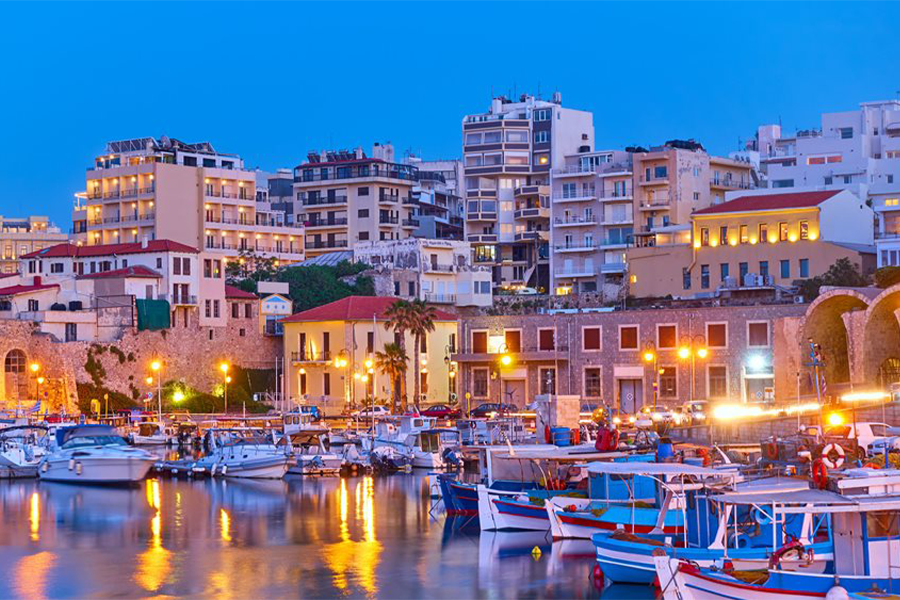
In the city of Heraklion it is worth visiting:
- The Archaeological Museum (consists of 20 rooms and its exhibits, mainly from central and eastern Crete, cover a history of 5500 years).
- The Historical Museum (it is housed in a three-story neoclassical building and covers the history of the Cretan civilization from the Christian era to the 20th century).
- The Aquarium of Crete (with hundreds of species and thousands of marine organisms, offers visitors a great taste of the marine wealth of the Mediterranean).
- The Central Market (The Central Market of Heraklion is located at 1866 Street. Here you will find many tourist shops, clothing and footwear shops, as well as fruit and vegetables, herb and spice shops. Also, here you will find many cafes and restaurants).
SIGHTS
The Koule is a Venetian fortress, in its current form, built between 1523 and 1540 to protect the port. Its name in the Venetian era was “Rocca a Mare” or “Castello a Mare” and during the Turkish occupation, after 1669, under the name “Koule”. It extends in an area of approximately 3,600 sq.m and has the form of a quadrilateral with a strongly projected part in the shape of a semicircle on its eastern side. It is two-storey and consists of extremely strong masonry, with the thickness of its external parts reaching 8.70 m. The winged lion of Saint Mark, embossed on the three marble slabs built into the fortress, imposing and emblematic, still oversees this impressive monument.
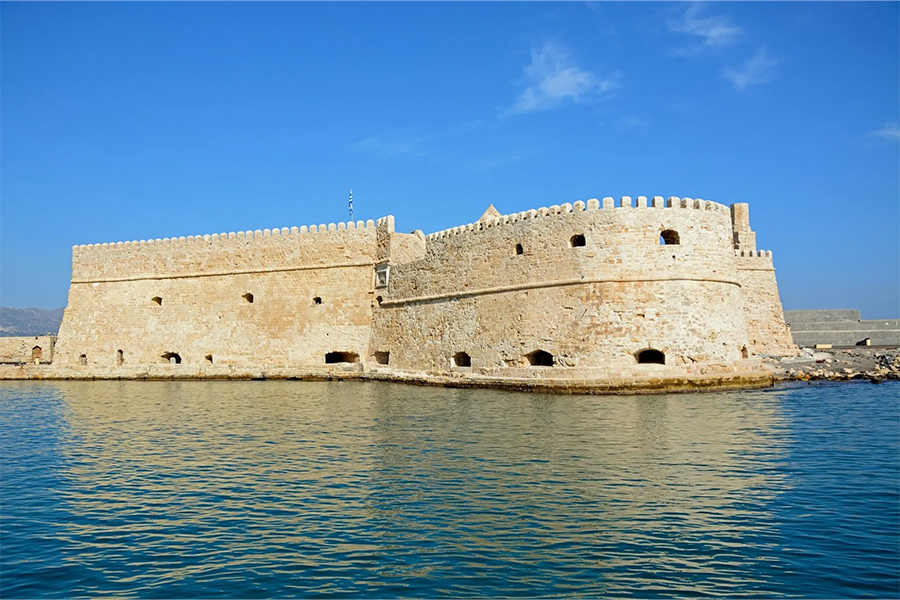
The Venetians in each of their acquisitions took care to build a luxurious building where their nobles and lords could spend their time happily and socialize. In Handaka, this role was played by the Loggia (Club) which is located today on 25th August Street and is considered one of the most elegant monuments left by the Venetians in the whole of Crete. It was an open gallery that, in addition to being a recreational area for the nobles, served a variety of functions, such as social events and activities.
Its existence is witnessed in the 14th century, but it was destroyed and rebuilt three times. Only a few metopes have been saved from the relief decoration, some of which are exhibited in the Historical Museum of Crete. Today it houses the services of the Municipality of Heraklion.
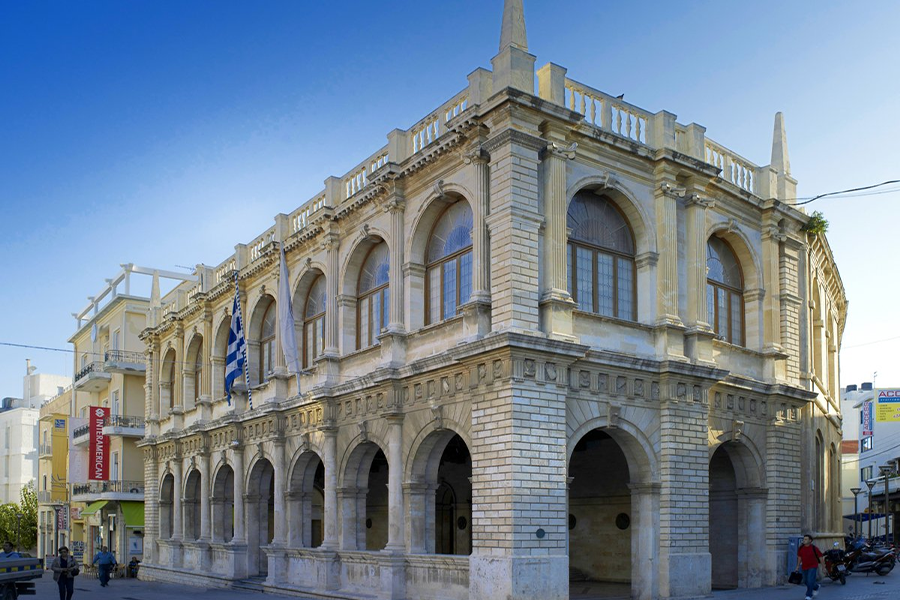
The Basilica of Saint Mark (Municipal Gallery of Heraklion)
The Municipal Gallery of the Municipality of Heraklion is housed in the area of the Basilica of Saint Mark in the center of Heraklion. The basilica was built by the Venetians in 1239, destroyed in 1303 by an earthquake and immediately restored. In 1669 it was converted into a mosque and in 1956 it took its current form.
Inside there are tombs of the Venetian dukes of Ηandaka, while next to the temple the base of the Venetian bell tower, later converted into a minaret, and a Turkish inscription are preserved. A 17th century tombstone with a Greek inscription and a relief coat of arms is kept in the Historical Museum of Crete.
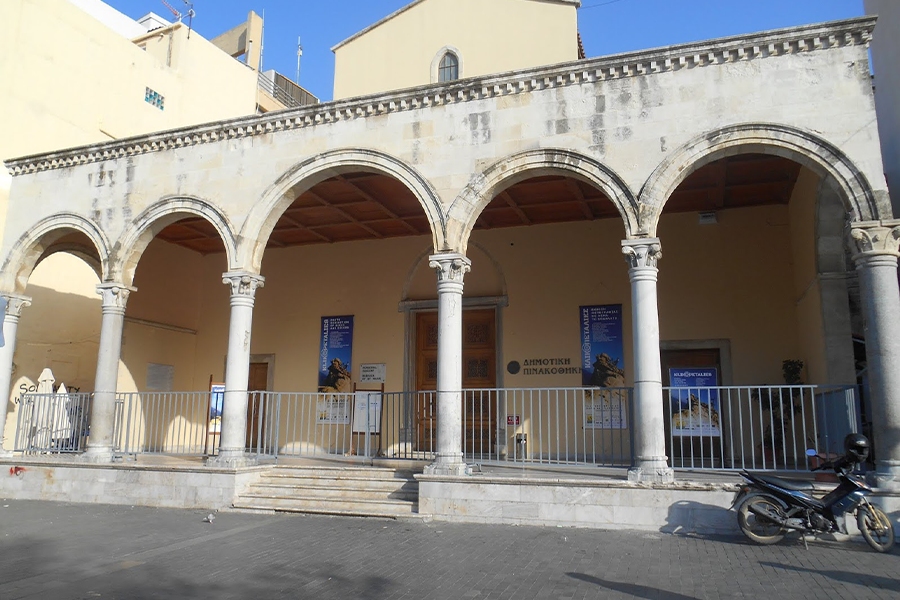
The church of Saint Titοs (Agios Titοs)
The imposing church of Saint Titοs, the first bishop of Crete, is located on 25th August Street, next to the Venetian armory (Armeria) and the Venetian club (Loggia). During the 2nd Byzantine period, the church of Agios Titos, the most famous and largest in Ηandaka, became the Metropolis of the new Diocese of Crete. Later the Venetians installed the Latin archbishop of the "Kingdom of Crete", turning the temple into a Latin Bishopric, probably proceeding with a radical reconstruction of its original form.
It is a square building with a narthex and a hemispherical dome, supported by four thin columns. Its external faces, clad with carved porolits, are structured in five vertical partitions in which the specially curated openings are arranged.
The church is still an important place of pilgrimage, since it is here that the holy chariot of Saint Titοs is kept, the return of which was made by Saint Mark of Venice in 1966. In the church of Santa Maria della Salute in Venice, there is also the icon of the Virgin Mary of Mesopanditissa who had transported, together with the chariot of Saint Titus, to Venice before the surrender of the city to the Turks in 1669.
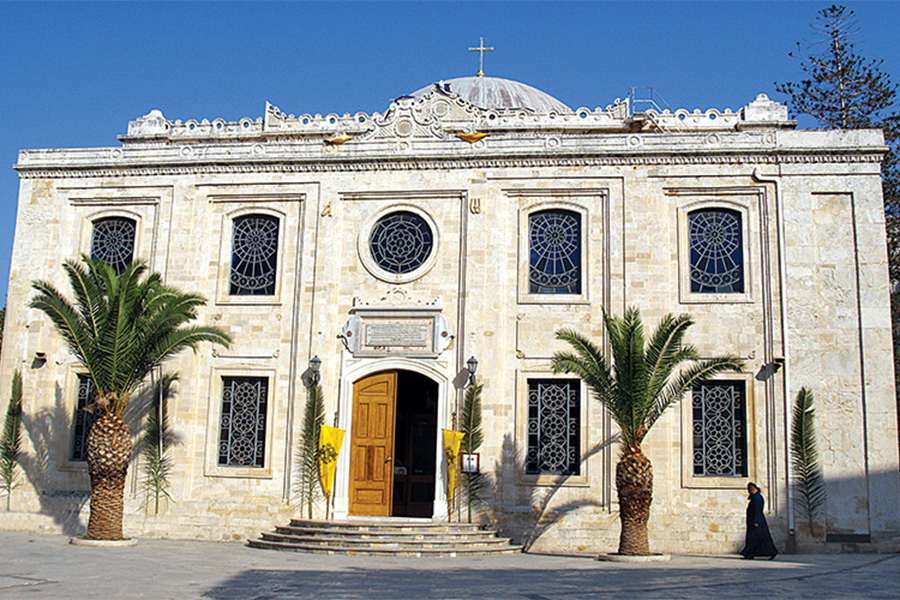
The Palace of Knossos is the largest of the centers of Minoan power. It is a building complex that is being developed in an area of 22,000 sq.m. Built on a largely artificial hill, it was the most impressive of the Minoan palaces. It was the administrative center of Minoan Knossos, which is located 5 km southeast of Heraklion. The first palace was built around 2000 BC. According to tradition, the palace of Knossos was the residence of King Minos. The palace looks like a labyrinth of working and living rooms, as well as storage areas while in the center you find a square. Detailed images of life in Crete during the Late Bronze Age can be found on the walls of the palace. The ruins were taken over in 1878 by a Cretan merchant and since then many attempts were made for a complete excavation, without success, until March 1900 when the English nobleman Arthur Evans bought the entire area and carried out a massive excavation bringing the ancient palace to sunlight, after thousands of years.
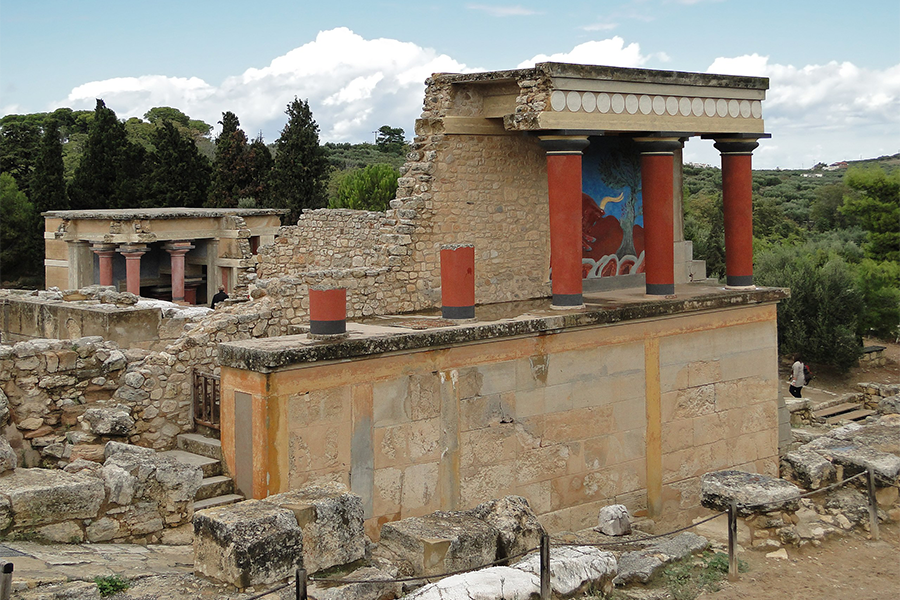
Phaistos was a city of Minoan Crete, 55 km south of Heraklion and near Tympaki. The ruins of the city are located on a low hill in the Mesara plain, with a panoramic view of the surrounding area. It is the second largest palace center after the palace of Knossos, as it occupies an area of 18 acres.
The palace of Phaistos is a visitable archaeological site and receives thousands of visitors a year. It was founded around 2000 BC, according to legend, by Minos. The king of the palace was the brother of Minos, the mythical Rhadamanthys. The palace was leveled in 1700 BC by a strong earthquake, but was immediately restored.
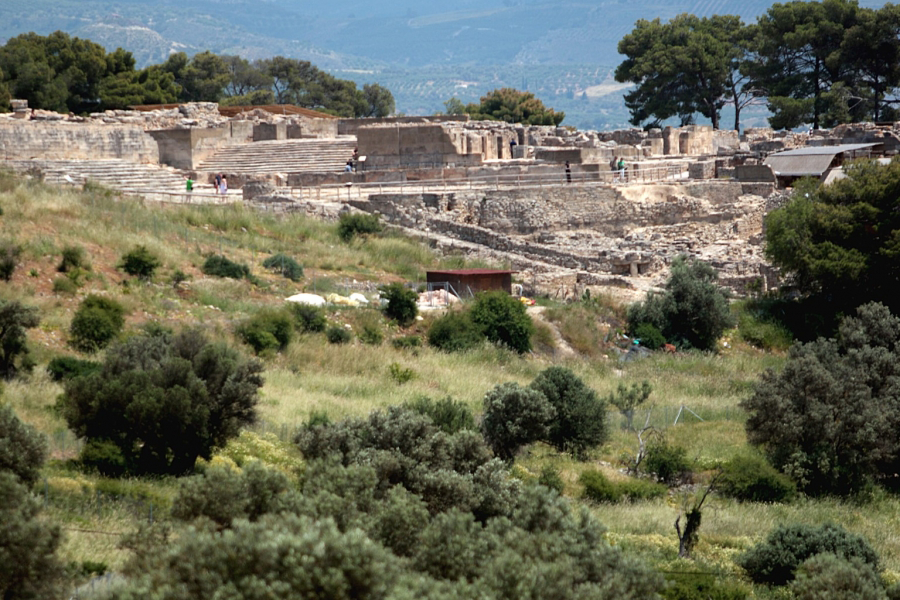
The tomb of the great Cretan writer Nikos Kazantzakis (1883-1957) is located at the highest point of the Walls of Heraklion, the Martinengo bastion, with a panoramic view of the historic city of Heraklion.
His grave is modest with a wooden cross and a plaque engraved with the famous phrase he wrote: "I hope for nothing. I'm not afraid of anything. I am free".
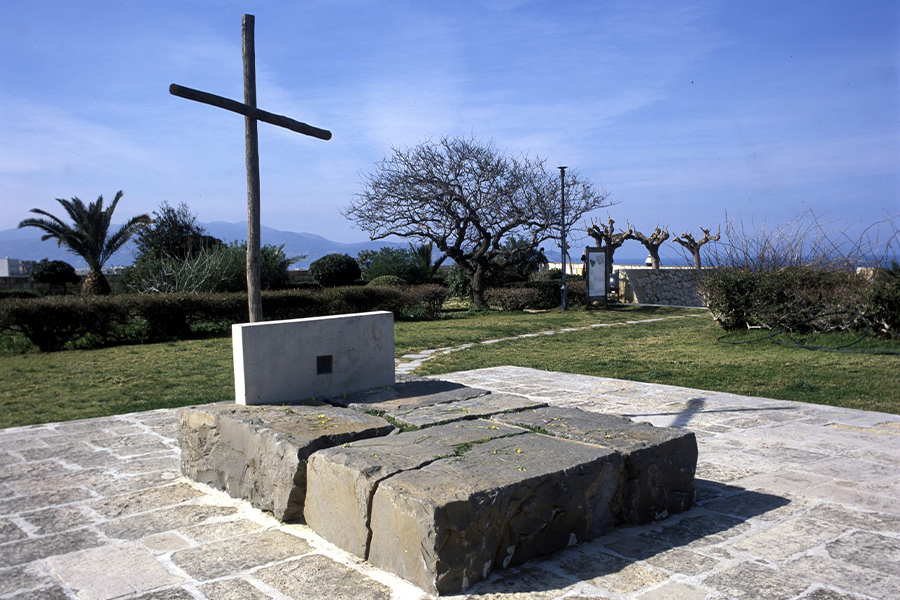
BEACHES
Agia Pelagia is located 24 kilometers North-West from Heraklion. It is one of the most popular summer destinations of Heraklion. The clear sea, the beach protected from the winds, and the amenities you can find there, make it one of the most beautiful and crowded beaches. Very close to the central beach of Agia Pelagia there are other beautiful beaches, some pebbly and some sandy. Mononavtis, Made beach, Lygaria, Paleokastro and other smaller ones.
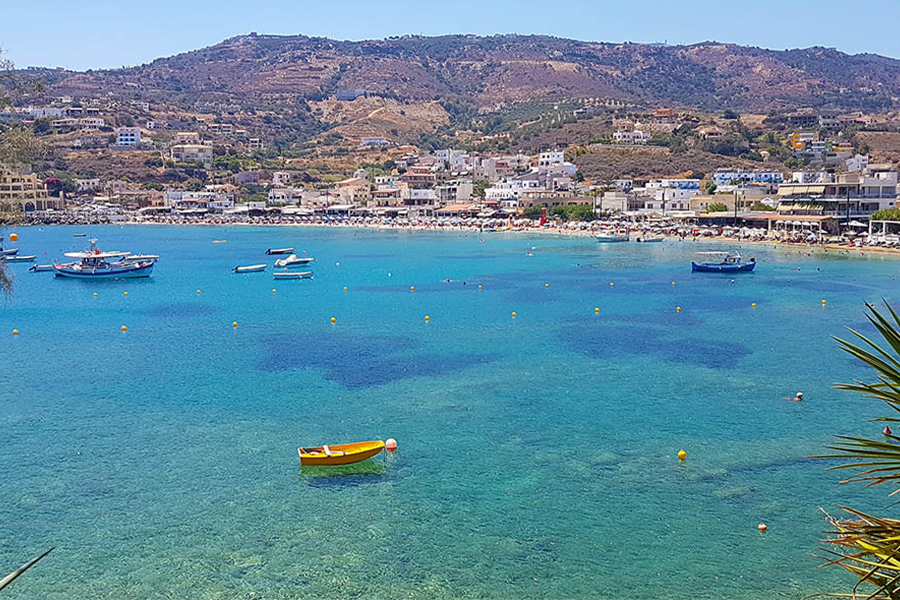
Agiofarango is located south of the Heraklion prefecture, very close to Matala. It is an amazing gorge which ends in a magnificent, pebbly beach. This beach is only accessible through the gorge or by boat from Kalous Limenes, which is why it has preserved its natural beauty. The route through the gorge takes about 15-20 minutes and will not tire you. Its waters are crystal clear and the scenery is beautiful. It is worth taking a day trip to Agiofarango, or camp on its beautiful beach and let yourself be in the tranquility of nature.
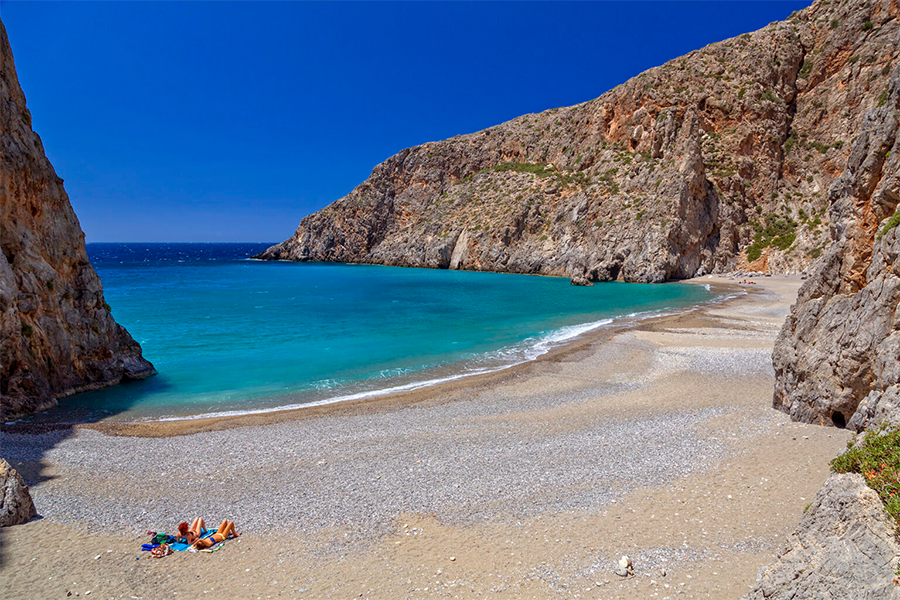
In Hersonissos you can find beaches for a calm swim but also noisy beaches with lots of people, music and water games. Limanakia consists of small, beautiful sandy beaches which are located to the west of Limenas Hersonissos. They are about 28 km east of Heraklion and the access is very easy.
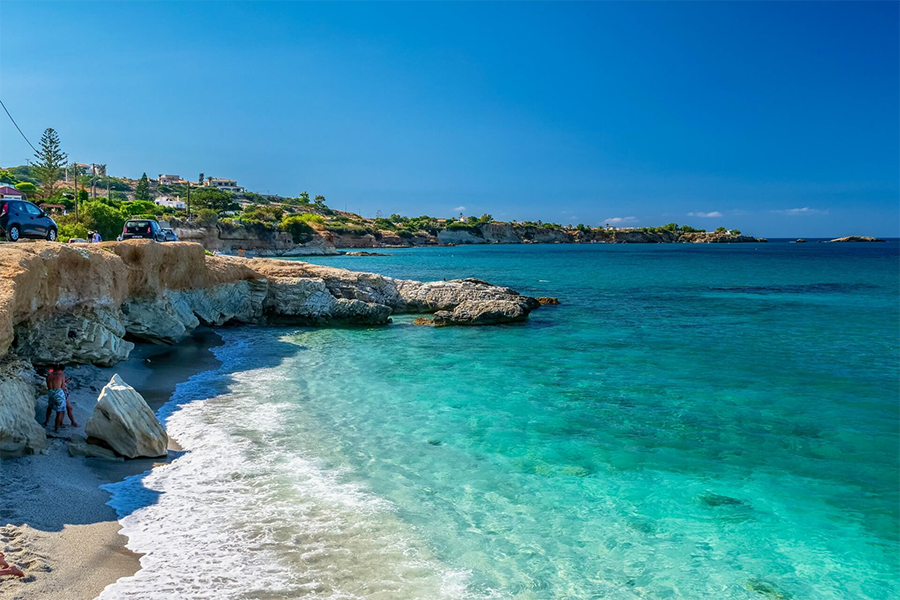
The beautiful sandy beach with its rock-hewn caves, which were converted from Roman-era tombs into a refuge for the flower children, became world-famous in the 1960s and still builds on the reputation of that period, although it no longer has the same isolation from culture. The beach is now organized, with umbrellas and sunbeds, the caves can be visited, but it is not allowed to spend the night in them. It is located in the south of the prefecture, in the plain of Messara. It has sand and clear water, but is quite deep and often with waves. It is organized, with umbrellas, sunbeds and showers, while in the summer, beach volleyball matches are also organized.
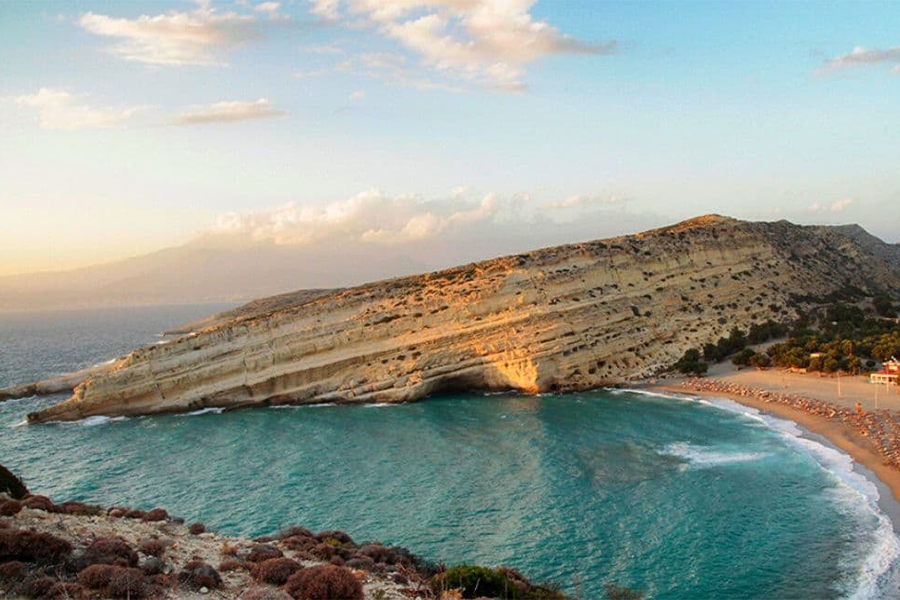
Voidomatis beach is located approximately 80 km from Heraklion in southern Crete and to its west, is the fishing village of “Treis Ekklisies”. It is a small bay at the end of a beautiful and imposing canyon. The cove is surrounded by two huge rocks and the view from above will enchant you. The beach has pebbles and sand, and the waters are blue-green and crystal clear. To reach this little paradise, you should follow the road that starts from the “Treis Ekklisies” village. You won't find amenities on Voidomatis beach. The area has no infrastructure such as accommodation, food or sunbeds for the beach. But there is shade throughout the day because of the high rocks and a large cave there. It is an ideal place for lovers of tranquility!
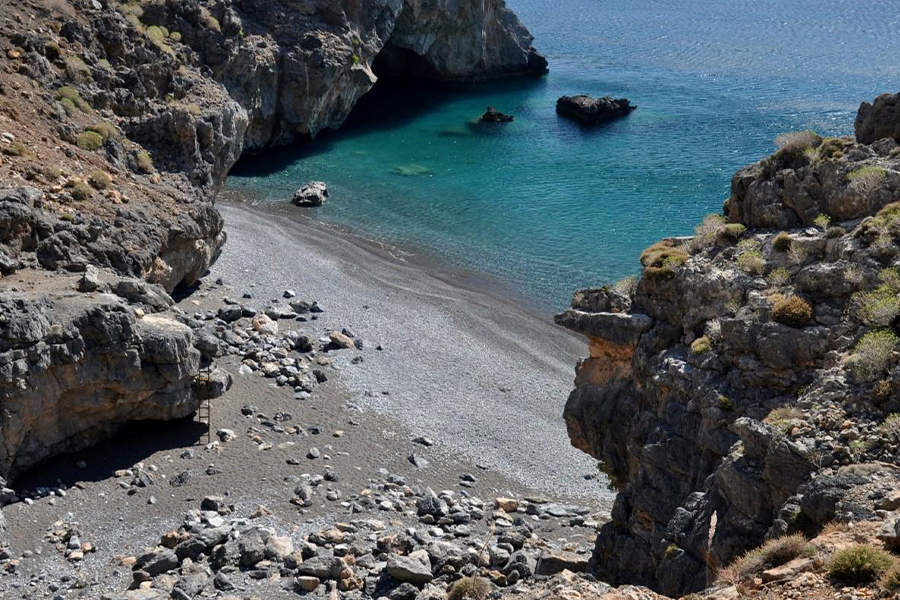
MEDITERRANEAN DIET
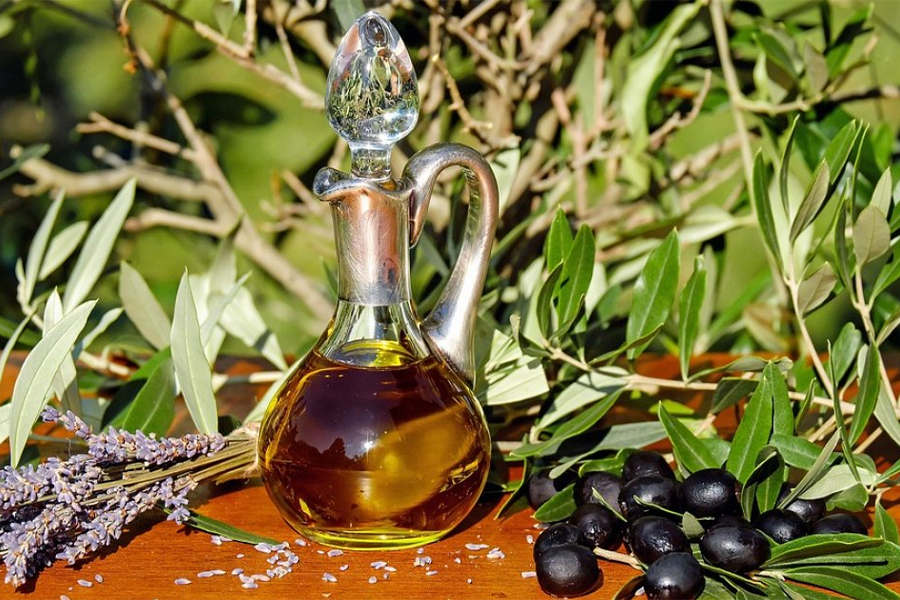
The Cretan diet, which is a model of the Mediterranean cuisine, is now known all over the world. Olive oil is the basis of the Cretan diet and the secret of the Cretans' longevity.
It is important for patients to get the right amount of protein, calories, fluids, vitamins and minerals each day. The Mediterranean diet consists mainly of plant foods, such as fruits, vegetables, whole grains, legumes and nuts. Red meats, processed foods and sweets are limited.
Vegetables, whole grain breads and cereals, potatoes, beans, nuts and seeds, extra virgin olive oil (cold pressed) are an important source of monounsaturated fat. Eggs, dairy products, fish and poultry are consumed in low to moderate amounts.
A healthy and balanced diet can help improve your overall health and reduce the risk of developing further problems.



